
Satoko Fujii's excellent trio with Mark Dresser on bass and Jim Black on drums: spiritous, technically impressive, melodically and conceptually adventurous music not to miss!
In Stock
Quantity in Basket: None
Log In to use our Wish List
Shipping Weight: 3.00 units
EU & UK Customers:
Discogs.com can handle your VAT payments
So please order through Discogs
Sample The Album:
Satoko Fujii-piano
Mark Dresser-bass
Jim Black-drums
Click an artist name above to see in-stock items for that artist.
UPC: 4562169330207
Label: Libra
Catalog ID: 203-020
Squidco Product Code: 9912
Format: CD
Condition: New
Released: 2008
Country: Japan
Packaging: Cardstock Foldover in a clear vinyl sleeve
Recorded on December 23, 2006 by Jeremy Kenny at One Soul Studios, NYC.
"Mark Dresser opens the first track, "Trace A River", with high arco bowing, plaintive, brooding, with sparse piano chords by Fujii and soft accentuations given by Jim Black's drums, but then the slow flowing tumbles down the slopes of hills and mountains in torrents of hard-hitting chords and percussive power, with Dresser's bass taking over the momentum for a fast pizzi solo, without slowing down the cascading river, sinewing and moving left and right, while Fujii is building up the tension again, in full force, with a quite interesting orchestrated and unexpected unison core theme, then Black gets his cascading solo moment, after which quietness and sweetness return, the water has reached flatter landscapes, leading to a stunning arco solo by Dresser, which evolves into a slow beautiful repetitive plaintive theme, supported by a fixed rhythm uptempo percussion, Fujii restraining herself with some sparse chordal accentuation. Expressive and impressive. The second track showcases Fujii's sense of rhythm and rhythm changes.
[...] Satoko Fujii really has her own style, full of unexpected dynamics, twists and turns, a great melodic and structural approach while remaining very improvisational at the same time. This is the fourth release of the Satoko Fujii Trio since 1997 if I'm not mistaken, and it's a real pitty that they only record every few years. The interplay between these three musicians is excellent and full of surprises. Like with Tamura, the blending of sweet impressionistic moments with hard accents and expressionistic depth and power is unusual and it works really well. Just one more example : on "A Maze Of Alleys", the piano starts with an upbeat jazzy Mozartian theme, which then really comes crashing down the stairs, piano and all, hitting the wall on the landing, and hard, but then the tune resumes and the track goes on, and you can visualize the way the tune finds its way through the maze, taking turns, bumping into things, hesitating, slowing down, then taking up speed again if the exit appears to be clear. It's fun, it's clever. It's soft, it's hard, it's serious and it's not. The following track brings a solo piano piece : soft, sensitive and serene. Great."-Freejazz-stef@blogspot.com
Get additional information at Freejazz-Stef @ Blogspot
Artist Biographies
• Show Bio for Satoko Fujii "Born on October 9, 1958 in Tokyo, Japan, Fujii began playing piano at four and received classical training until twenty, when she turned to jazz. From 1985-87, she studied at Boston's Berklee College of Music, where her teachers included Herb Pomeroy and Bill Pierce. She returned to Japan for six years before returning to the US to study at the New England Conservatory in Boston, where her teachers included George Russell, Cecil McBee, and Paul Bley, who appeared on her debut CD Something About Water (Libra, 1996). Since then Fujii has been an innovative bandleader and soloist, a tireless seeker of new sounds, and a prolific recording artist in ensembles ranging from duos to big bands. She has showcased her astonishing range and ability approximately 80 CDs as leader or co-leader. With each new recording or new band, she explores new aspects of her art. Regular collaborations include her New York trio with bassist Mark Dresser and drummer Jim Black, augmented by trumpeter/husband Natsuki Tamura to form the Satoki Fujii Four; her duo with Tamura; the Satoko Fujii Quartet featuring Tatsuya Yoshida of the Japanese avant-rock duo, The Ruins; Orchestra New York, which boasts the cream of New York's contemporary avant garde improvisers, including saxophonists Ellery Eskelin and Tony Malaby, trumpeters Herb Roberton and Steven Bernstein, and trombonist Curtis Hasselbring, among others; Orchestra Tokyo, drawing on that city's best improvisers; Orchestra Nagoya; Orchestra Kobe; the co-operative trio Junk Box with Tamura and percussionist John Hollenbeck; ma-do, a quartet including Tamura on trumpet, bassist Norikatsu Koreyasu, and Akira Horikoshi; the Min-Yoh Ensemble with Tamura, trombonist Hasselbring, and accordionist Andrea Parkins; the Satoko Fujii New Trio, featuring bassist Todd Nicholson and drummer Takashi Itani― plus countless engagements and collaborations with some of the world's most important improvisers." ^ Hide Bio for Satoko Fujii • Show Bio for Mark Dresser Mark Dresser is a Grammy nominated, internationally renowned bass player, improviser, composer, and interdisciplinary collaborator. At the core of his music is an artistic obsession and commitment to expanding the sonic, musical, and expressive possibilities of the contrabass. He has recorded over one hundred thirty CDs including three solo CDs and a DVD. From 1985 to 1994, he was a member of Anthony Braxton's Quartet, which recorded nine CDs and was the subject of Graham Locke's book Forces in Motion (Da Capo). He has also performed and recorded music of Ray Anderson, Jane Ira Bloom, Tim Berne, Anthony Davis, Dave Douglas, Osvaldo Golijov, Gerry Hemingway, Bob Ostertag, Joe Lovano, Roger Reynolds, Henry Threadgill, Dawn Upshaw, John Zorn. Dresser most recent and internationally acclaimed new music for jazz quintet, Nourishments (2013) his latest CD (Clean Feed) marks his re-immersion as a bandleader. Since 2007 he has been deeply involved in telematic music performance and education. He was awarded a 2015 Shifting Foundation Award and 2015 Doris Duke Impact Award. He is Professor of Music at University of California, San Diego. ^ Hide Bio for Mark Dresser • Show Bio for Jim Black Jim Black is at the forefront of a new generation of musicians bringing jazz into the 21st century. In addition to being one of the most influential drummers of our time, he is also the leader of one of the world's most forward-thinking bands, AlasNoAxis, featuring his longtime collaborators Chris Speed, Hilmar Jensson and Skúli Sverrisson. Based on the foundation of his virtuosic but highly personal approach to jazz drumming, Black's aesthetic has expanded to include Balkan rhythms, rock songcraft and laptop soundscapes. Though he is revered worldwide for his limitless technique and futuristic concepts, what many listeners treasure in most Jim Black's work is the relentless feeling of joy and invention he brings to his performances. Jim Black's smiling, kinetic, unpredictable presence has enthralled and inspired audiences worldwide for over twenty-five years. Since the mid-90's, Black has played a major role in the incorporation of new sounds and techniques into the jazz/creative music context. As a member of the collective group Pachora (with Speed, Sverrisson, and guitarist Brad Shepik) Black was one of the leaders in the study and adaptation of Balkan music into jazz-based music. His advanced techniques abstracted the odd time signatures of the Balkans into a new polyrhythmic language equally informed by modern jazz, drum&bass and the dumbeks of the Balkans. Black has also been an innovator in the use of electronics in improvisation, bridging the gap between electro-acoustic improv and more jazz-based traditions. Today, Black's performances are just as likely to feature his laptop-based electronic textures as his drumming. Born in 1967, Jim Black grew up in Seattle alongside future colleagues Chris Speed, Andrew D'Angelo and Cuong Vu. After cementing their personal and artistic relationships in Seattle's various youth jazz ensembles, in 1985 they moved to Boston, where Black entered the Berklee School of Music. In Boston, Black, Speed and D'Angelo formed Human Feel with guitarist Kurt Rosenwinkel, which rapidly attracted the attention of the jazz cognoscenti in Boston, New York and beyond. By 1991, Black and the other members of Human Feel had moved to New York City, where they electrified the Downtown music scene then centered around the Knitting Factory and rapidly became among the city's busiest sidemen. Black's early years in New York saw him take featured roles in some of the most critically acclaimed bands of the time, like Tim Berne's Bloodcount, Ellery Eskelin's trio, and Dave Douglas's Tiny Bell Trio. Thus began fifteen years of near-constant touring and recording, with the above bands as well as artists like Uri Caine, Dave Liebman, Nels Cline, Steve Coleman, Tomasz Stanko, and Laurie Anderson. ^ Hide Bio for Jim Black
7/9/2025
Have a better biography or biography source? Please Contact Us so that we can update this biography.
7/9/2025
Have a better biography or biography source? Please Contact Us so that we can update this biography.
7/9/2025
Have a better biography or biography source? Please Contact Us so that we can update this biography.
Track Listing:
1. Trace A River 12:43
2. Take Right 7:31
3. Manta 7:35
4. A Maze Of Alleys 6:23
5. Day After Tomorrow 3:21
6. Kawasemi 7:47
7. February 2:44
8. Sunset In Savanna 9:18
Improvised Music
Jazz
NY Downtown & Metropolitan Jazz/Improv
Trio Recordings
Trio Recordings
Satoko Fujii & Natsuki Tamura's Libra Label
Piano Trio (Piano Bass Drums)
Search for other titles on the label:
Libra.


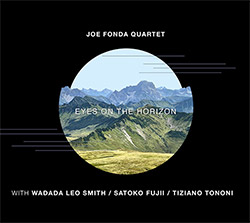




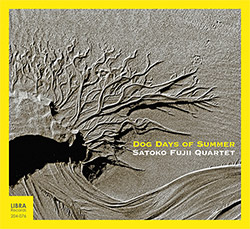

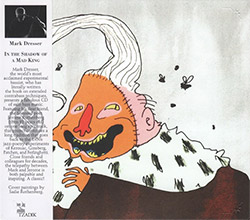
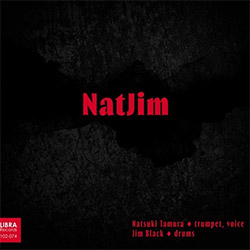



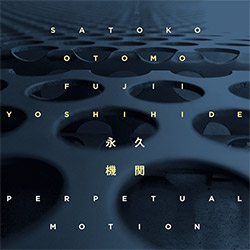



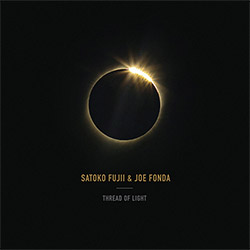
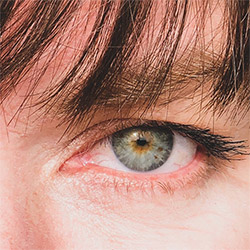

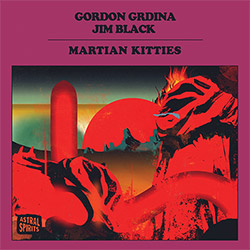

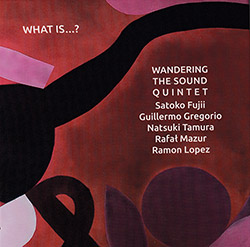







![BlueRing Improvisers: Materia [2 CDs]](https://www.teuthida.com/productImages/misc4/36513.jpg)




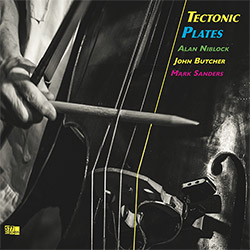



![Wheelhouse (Rempis / Adasiewicz / McBride): House And Home [VINYL]](https://www.teuthida.com/productImages/misc4/36462.jpg)
![+DOG+: The Light Of Our Lives [2 CDs]](https://www.teuthida.com/productImages/misc4/36009.jpg)


![Parker, Evan / Jean-Marc Foussat: Insolence [VINYL]](https://www.teuthida.com/productImages/misc4/36398.jpg)










![Deupree, Jerome / Sylvie Courvoisier / Lester St. Louis / Joe Morris: Canyon [2 CDs]](https://www.teuthida.com/productImages/misc4/36404.jpg)



![Eventless Plot | Haarvol: The Subliminal Paths [CASSETTE + DOWNLOAD]](https://www.teuthida.com/productImages/misc4/36232.jpg)










![Eventless Plot | Francesco Covarino: Methexis [CASSETTE + DOWNLOAD]](https://www.teuthida.com/productImages/misc4/36231.jpg)



![Das B (Mazen Kerbaj / Mike Majkowski / Magda Mayas / Tony Buck): Love [VINYL]](https://www.teuthida.com/productImages/misc4/36329.jpg)


![Eternities: Rides Again [CASSETTE]](https://www.teuthida.com/productImages/misc4/36247.jpg)
![Lopez, Francisco: Untitled (2021-2022) [2 CDs]](https://www.teuthida.com/productImages/misc4/36438.jpg)






![Money : Money 2 [2 CDs]](https://www.teuthida.com/productImages/misc4/35894.jpg)




![Klinga, Erik: Elusive Shimmer [VINYL]](https://www.teuthida.com/productImages/misc4/36258.jpg)
![CHANGES TO blind (Phil Zampino): Volume 9 - I Wave on a Fine Vile Mist [CD + DOWNLOAD]](https://www.teuthida.com/productImages/misc4/36061.jpg)

![Wallmart / Rubbish: Asset Protection [split CD]](https://www.teuthida.com/productImages/misc4/35900.jpg)


![+Dog+: The Family Music Book Vol. 5 [2 CDs]](https://www.teuthida.com/productImages/misc4/35897.jpg)
![Kuvveti, Deli : Kuslar Soyledi [CASSETTE w/ DOWNLOAD]](https://www.teuthida.com/productImages/misc4/36107.jpg)

![Brown, Dan / Dan Reynolds: Live At The Grange Hall [unauthorized][CASSETTE]](https://www.teuthida.com/productImages/misc4/36245.jpg)








![Palestine, Charlemagne / Seppe Gebruers: Beyondddddd The Notessssss [VINYL]](https://www.teuthida.com/productImages/misc4/36206.jpg)
![Palestine, Charlemagne / Seppe Gebruers: Beyondddddd The Notessssss [NEON GREEN VINYL]](https://www.teuthida.com/productImages/misc4/36207.jpg)

![Laubrock, Ingrid: Purposing The Air [2 CDs]](https://www.teuthida.com/productImages/misc4/35639.jpg)

![Yoko, Ono / The Great Learning Orchestra: Selected Recordings From Grapefruit [2 CDs]](https://www.teuthida.com/productImages/misc4/35841.jpg)









![Zorn, John / JACK Quartet: The Complete String Quartets [2 CDs]](https://www.teuthida.com/productImages/misc4/35609.jpg)
![Lonsdale, Eden: Dawnings [2 CDs]](https://www.teuthida.com/productImages/misc4/35480.jpg)



![Sorry For Laughing (G. Whitlow / M. Bates / Dave-Id / E. Ka-Spel): Rain Flowers [2 CDS]](https://www.teuthida.com/productImages/misc4/35985.jpg)

![Rolando, Tommaso / Andy Moor : Biscotti [CASSETTE w/ DOWNLOADS]](https://www.teuthida.com/productImages/misc4/36106.jpg)


![Electric Bird Noise / Derek Roddy: 8-10-22 [CD EP]](https://www.teuthida.com/productImages/misc4/35970.jpg)







![Elephant9 : Mythical River [VINYL]](https://www.teuthida.com/productImages/misc4/34624.jpg)



![Elephant9 with Terje Rypdal: Catching Fire [VINYL 2 LPs]](https://www.teuthida.com/productImages/misc4/35355.jpg)
![Deerlady (Obomsawin, Mali / Magdalena Abrego): Greatest Hits [VINYL]](https://www.teuthida.com/productImages/misc4/34876.jpg)







![Surplus 1980: Illusion of Consistency [CD]](https://www.teuthida.com/productImages/misc4/35069.jpg)
![Staiano, Moe: Away Towards the Light [VINYL + DOWNLOAD]](https://www.teuthida.com/productImages/misc4/35037.jpg)
![Coley, Byron: Dating Tips for Touring Bands [VINYL]](https://www.teuthida.com/productImages/misc4/17906.jpg)

![Lost Kisses: My Life is Sad & Funny [DVD]](https://www.teuthida.com/productImages/misc4/lostKissesDVD.jpg)